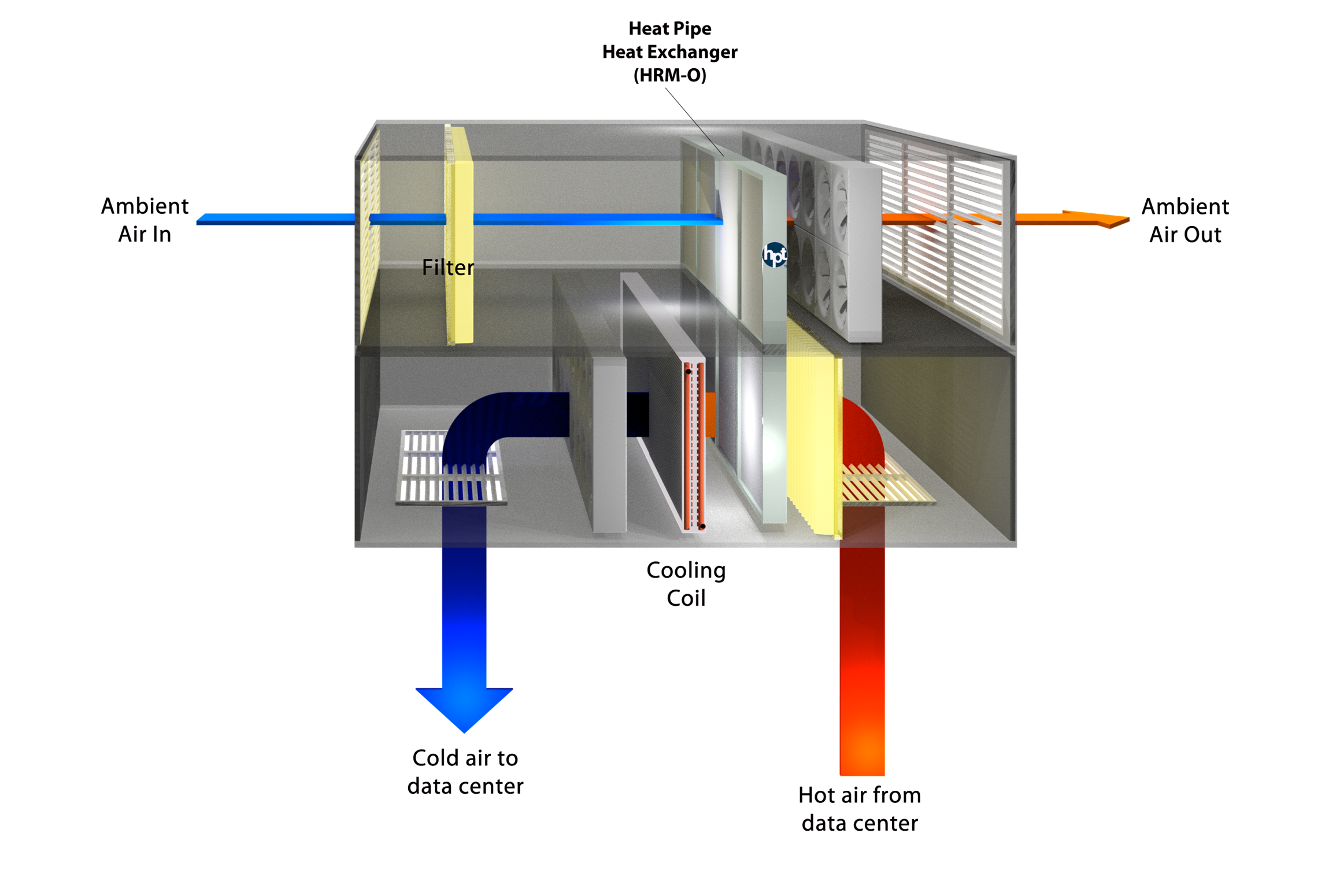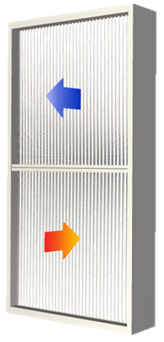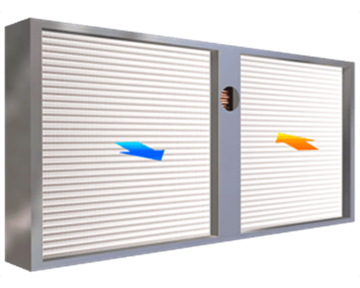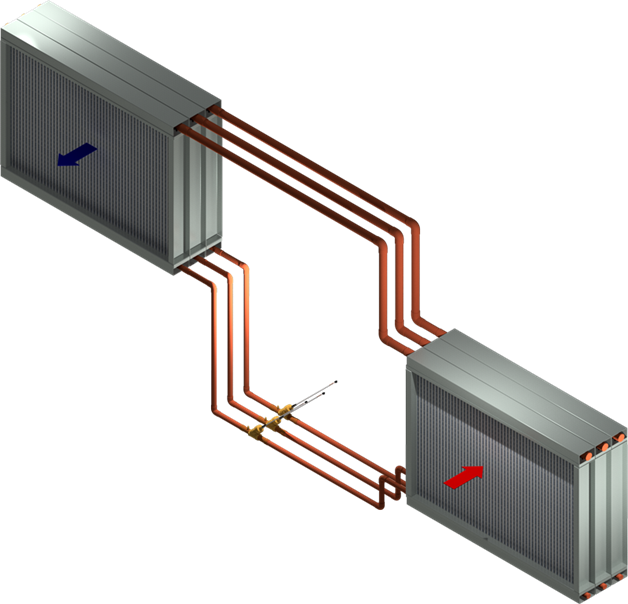Up to 40% of the total consumed in a data center power is due to cooling server rooms down to a suitable temperature year-round. Passive energy recovery heat pipes can play a major role in reducing power consumption enabling data centers to run at peak efficiency.
Heat pipe energy recovery modules (HRMs) provide a passive cooling effect to reduce loads and downsize the mechanical cooling system in indirect cooling applications, whether chilled water or direct expansion.
Heat Recovery Modules (HRMs)
HRMs consist of copper tubes, aluminum fins, and a working fluid that changes phase passively to move heat. As air passes over the warm side (hot air aisle from data center return air) of the heat pipe, see diagram below, the refrigerant vaporizes, absorbing energy, then travels to the cold side (outside air) where it condenses, releasing energy, then flows back to the warm side. This process occurs as long as outside air is cooler than data center air. This enables data center cooling without introducing outside air to the server room space to avoid equipment contamination. Additional cooling can be provided by evaporative cooling of the outside air upstream of the heat pipe when outside air temperature exceeds that of the data center. Mechanical cooling does the rest, as needed.
Advantages of Using HPT Heat Pipes in Data Centers:
- Passive heat rejection to the outside- NO electrical load.
- Reduction of the load on CRAC systems or other A/C units
- Isolated air streams-ZERO contamination of the data center by outside air
- No moisture added to space, better humidity control
- RELIABLE – No moving parts to fail
- Small footprint, less space taken
- New or existing system retrofits
- No added power, reduction of PUE
- Many refrigerant circuits provide added REDUNDANCY

Most popular configuration with highest effectiveness. Data center air stream passes through the lower section of the heat pipes, while ambient air passes through the upper section.

This is for data centers with airstreams that are side-by-side and adjacent to one another. The HRM-Z is designed with a static tilt that favors cooling recovery (heat rejection).

Suitable for data centers where the data center air stream and ambient air (heat sink) are separated by large distances (floor to roof for instance). Works when the airstreams are on the same level but best performance is achieved when the outside air is elevated higher than the data center return air.



